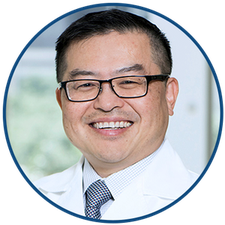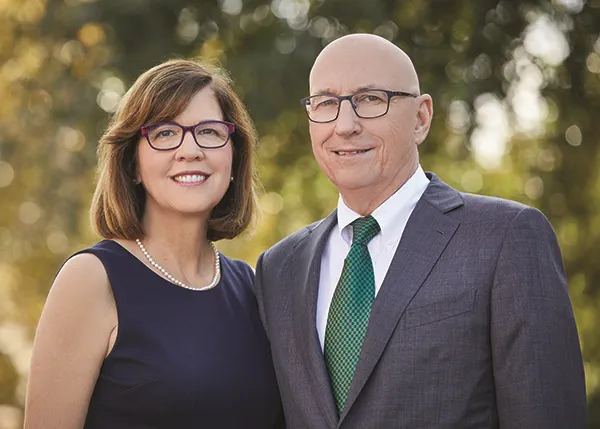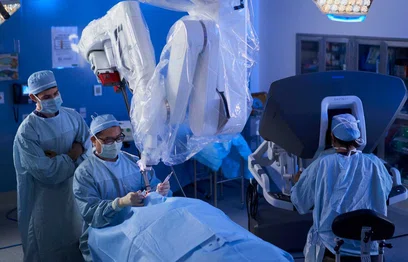

Face to Face
discover the newsletter


september 2022 ENT Newsletter
A Letter from the Chair
A Blank Canvas
The practice of medicine and medical training have come to a crossroad in this new era of advances in technology and communication in our post-pandemic society. It’s not enough to lean on lessons from the past and traditional learning in a new world of constant discovery. Today’s virtual environment and cross-culture exposure dramatically expand the way we can teach.
If there is anything we should take with us from the COVID-19 experience, it is to avoid our former silos of education and embrace global learning.

Mas Takashima, MD, FACS
In the course of advancing resident education in a new department in the largest medical center in the world, among generations of experts, visionaries and leaders, my goals must be intentional, well considered and ultimately successful. Like in all areas of health care, there will be few opportunities for trial and error. Errors can mean setbacks and years wasted to unravel and rework the infrastructure – and, importantly, missed opportunities.
We now have a blank canvas to be the innovators of education in our field. As such, we have begun to create the foundation for vertical integration and education without boundaries.
Education without boundaries: The MITIEverse
A first and important observation I made when I became department chair at Houston Methodist is that we had to have more faculty with academic appointments to train residents how to operate. Faculty appointments set standards and rigors for every faculty member to continue to advance their skills across the spectrum of our field. We now have 20 faculty with Weill Cornell Medical College and Houston Methodist Academic Institute appointments.
What I have realized now is: Why settle with 20 educators when there are hundreds of academic otolaryngologists across the country?
As such, we have already had three visiting professors for our new residency program that just started in July 2022 (Drs. Kofi Boahene – Professor, Johns Hopkins, PJ Wormald – Chair of the University of Adelaide, Jonathan Ting – Chair of Indiana University).
We are incorporating the Collaborative Multi-Institutional Otolaryngology Residency Education Program, which are lectures created during COVID-19 by more than 115 Otolaryngology – Head and Neck Surgery faculty across the country (https://sites.usc.edu/ohnscovid/pastvideos/).
We have partnered with UTMB Galveston to assist with a multi-institutional otolaryngology simulation center training experience for residents, and we have started our first annual 25-station multi-institutional Endoscopic Sinus and Skull Base surgery training course at Houston Methodist Institute for Technology, Innovation and Education (MITIE) teaching residents from Houston Methodist, Baylor College of Medicine, UT-Houston, and UTMB. This course had eight fellowship-trained rhinologists from all participating institutions along with rhinologists from LSU Shreveport and Indiana University. It was great to see so many different institutions getting together for the sake of education.
In MITIE, we are continuing to work on creating a virtual orientation of our department with 3D videos and 360-degree views of facilities, faculty, learners and procedures. In fact, we are on our way to creating an artificial metaverse training environment, which we fondly call our MITIEverse.
In addition, we will continue to utilize the newest high-tech 3D surgical models that will allow us to teach specific subspecialties with that specific criterion that needs to be studied and learned. We tested the first 3D surgical models this past month in our Endoscopic Sinus and Skull base Course with very promising results. Eventually, this evolutionary practice will allow us to standardize surgical treatment.
Traditional teaching techniques, surgical training in our own operating suites with dedicated Otolaryngology-specific professionals, online lectures, augmented and virtual reality training, visiting professors, translational research and multi-institutional courses utilizing 3D surgical training models and simulation will all play large roles in the way we teach in our new residency program.
Watching this evolution has been truly exciting. We have taken the first strokes on our canvas. I hope to continue to chronicle our progress as we color our blank canvas with amazing new ways to teach.
Mas Takashima, MD, FACS
Professor and Chair
Department of Otolaryngology – Head & Neck Surgery
Houston Methodist Academic Institute
In the course of advancing resident education in a new department in the largest medical center in the world, among generations of experts, visionaries and leaders, my goals must be intentional, well considered and ultimately successful.

ANNOUNCEMENTS
Welcome to the new hires of ENT Faculty for the Medical Center, Willowbrook, and The Woodlands.
Collin Mulcahy, MD
HM Willowbrook
Otolaryngology -
Head and Neck Surgery
Dan Strigenz, MD
HM The Woodlands
Otolaryngology -
Head and Neck Surgery
Laura Kim, MD
HM Medical Center
Otolaryngology -
Head and Neck Surgery
in the news
Laura Kim, Head and Neck Surgeon, Joins ENT Team
Laura Kim, MD, brings more hands to the Head and Neck Surgery team. Meet Dr. Kim in our profile.
learn more about this physician

Head and Neck Surgeons Take Their Capabilities to the Neal Cancer Center
It takes a team to treat a patient. The Head and Neck Surgery team has expanded, and its taking advantage of the offerings at the Neal Cancer Center.
READ MORE

Feature story
Otolaryngology OR is a vision of the future
When visiting physicians and professors come to Houston Methodist Hospital, they say they feel like they are stepping into the future of surgical care for Otolaryngology, Head and Neck Surgery.


Technology here is what we would expect to see in 10 to 20 years’ time. The patient monitoring technology to deal with issues such as falls not only increases patient quality of care but safety. It is like looking at how health care will be provided in the future.
Professor Peter John Wormald, Chairman Of Otolaryngology, Head and Neck Surgery at the University of Adelaide in Australia.

Read now

The Department of Otolaryngology – Head and Neck Surgery
Click here
Physicians & Faculty
CLICK HERE
Departmental Education
Our mission is to provide the best patient care experience while training students, residents, fellows and physician scientists
CLICK HERE
Sign up for The Department of Otolaryngology – Head and Neck Surgery newsletter
Sign up





